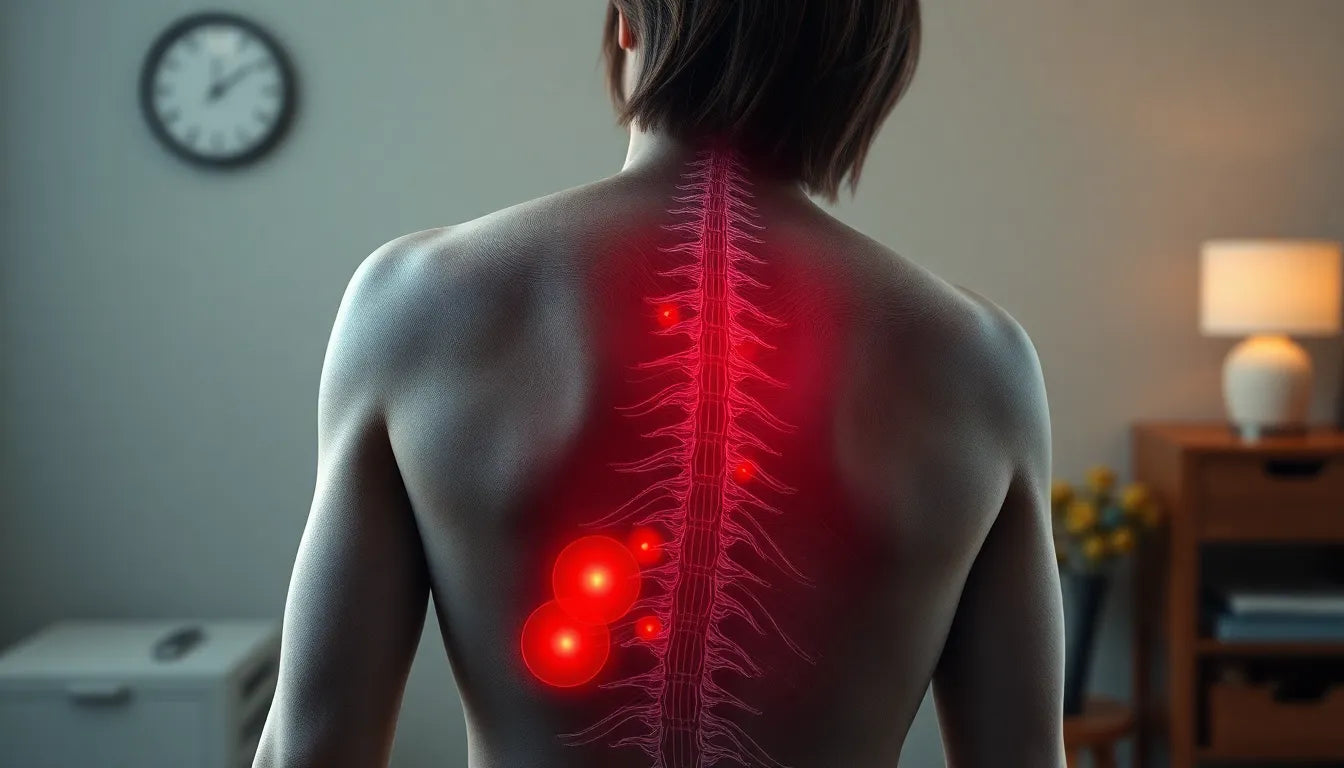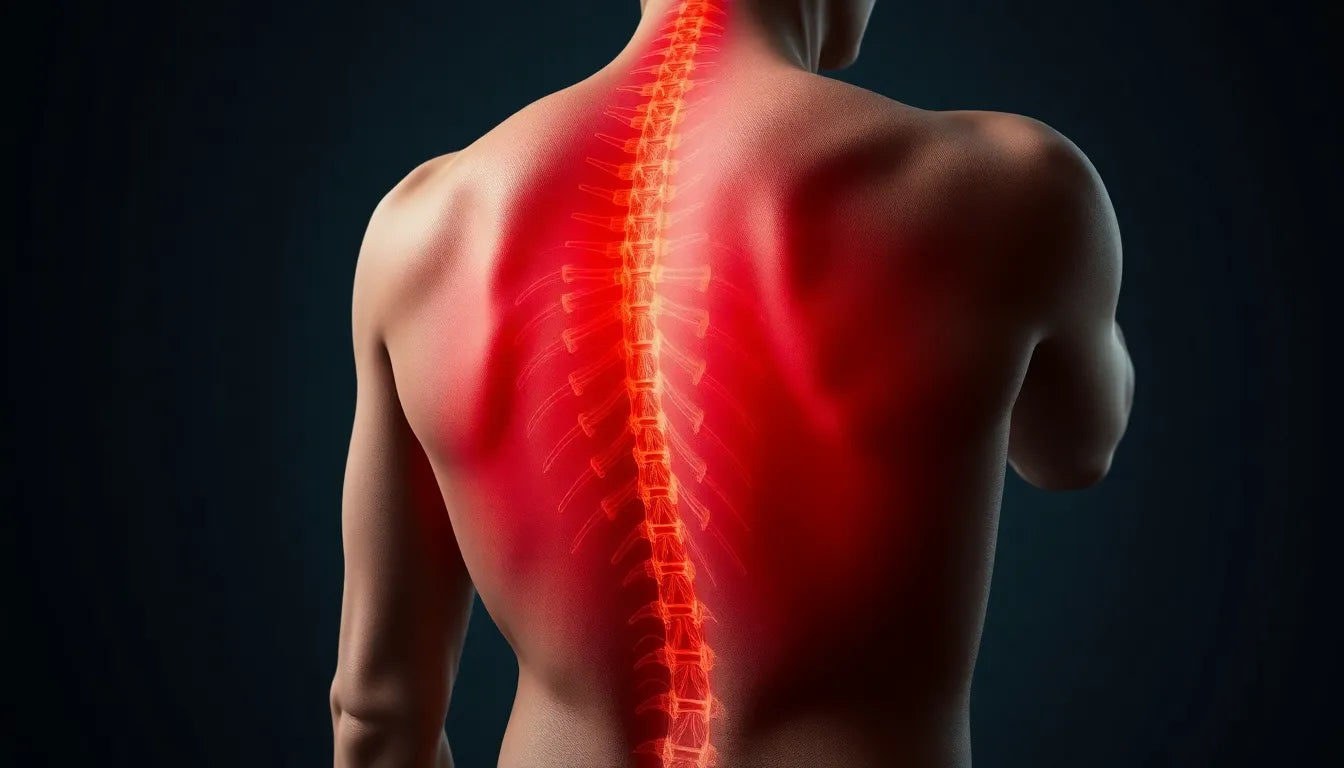Lower back pain, or "smerter i lænden," is a common ailment that affects a significant portion of the population, impacting daily life and overall well-being. Whether it's a dull ache or a sharp, persistent pain, discomfort in the lower back can disrupt work, leisure activities, and even sleep. Understanding the prevalence and impact of lower back pain is crucial, as it often signifies underlying issues that require attention.
Common symptoms of lower back pain include stiffness, reduced mobility, and muscle spasms, with varying degrees of intensity. These symptoms can arise from several causes, such as muscle strains, ligament injuries, or more complex conditions like disk herniation and sciatica. Recognizing these symptoms and understanding their potential causes is essential for effective management and relief.
Exploring the causes of lower back pain
Have you ever woken up with a stiff back, or found yourself struggling to sit comfortably at your desk? These scenarios are all too familiar for many people and highlight the importance of addressing lower back pain. The causes of this discomfort can range widely, from simple muscle strains due to overexertion or poor posture to more severe conditions like disk herniation, where the soft tissue between the vertebrae protrudes and irritates nearby nerves. Sciatica, characterized by pain radiating down the leg, is another common culprit, often resulting from nerve compression in the lower spine.
The goal of this post is to provide insights into achieving relief and enhancing well-being for those suffering from lower back pain. By understanding the broad spectrum of causes and symptoms, individuals can take proactive steps toward managing their discomfort effectively.
Finding relief and improving well-being
Addressing lower back pain involves a multifaceted approach that includes identifying the root causes and implementing effective strategies for relief. From conservative treatments like rest and heat application to engaging in targeted exercises, there are numerous ways to alleviate pain and promote healing. Additionally, incorporating ergonomic solutions into daily routines can significantly reduce strain on the lower back, preventing future issues.

Lumbar support belt
Provides stabilizing and adjustable support for lower back pain, ideal for sciatica and herniated discs.
As we delve deeper into the topic, this post will explore various causes, treatment options, and preventive measures to help you navigate your journey toward a pain-free life. By the end, you'll have a comprehensive understanding of how to manage lower back pain and enhance your overall well-being.
understanding the causes of smerter i lænden
Lower back pain, or smerter i lænden, can be attributed to a variety of causes, each necessitating a different approach for effective management. Commonly, muscle or ligament strains occur due to sudden movements or overuse, especially in individuals who engage in heavy lifting or maintain poor posture for extended periods. Disk issues, including herniation, arise when the soft tissue between vertebrae protrudes, potentially compressing nerves and causing significant discomfort.
Nerve compression is another frequent cause, often manifesting as sciatica, where pain radiates down the leg. Insights from Kroppens Hus highlight that understanding these specific conditions is crucial for tailoring effective treatment strategies. Recognizing the root cause of your lower back pain is the first step toward relief and is essential in preventing future occurrences.
conservative treatment approaches
For many experiencing smerter i lænden, conservative treatment methods serve as the first line of defense. These approaches prioritize non-invasive solutions, such as rest, application of heat or ice, and over-the-counter pain relief medications. According to Sundhed.dk, these methods are essential before considering more invasive treatments. Rest allows the body to heal naturally, while heat can soothe muscle stiffness and ice can reduce inflammation.
Incorporating these treatments into your routine can significantly alleviate pain and promote recovery. However, it's vital to balance rest with activity, as prolonged inactivity may exacerbate stiffness and delay healing. Thus, understanding when and how to apply these treatments is key to effectively managing lower back pain.
the role of exercise and physical activity
Maintaining an active lifestyle through targeted exercises is crucial for managing and preventing smerter i lænden. Physiotherapeutic exercises, as recommended by DinRyg.dk and Anodyne's blog, focus on strengthening and improving flexibility in the lower back. These exercises not only aid in reducing current pain but also fortify the back against future injuries.
- Pelvic tilts: Lie on your back with knees bent, flatten your back against the floor by tightening your abdominal muscles, and hold for a few seconds.
- Knee-to-chest stretches: Pull one knee toward your chest, hold, and switch legs to relieve tension in the lower back.
- Cat-cow stretches: On hands and knees, alternate between arching your back upward and downward, promoting flexibility.
Incorporating these simple exercises into your daily routine can greatly enhance your back's resilience. Regular physical activity not only aids in pain management but also contributes to overall well-being.
ergonomic solutions for lower back pain
The significance of ergonomics in alleviating and preventing smerter i lænden cannot be overstated. Proper ergonomic practices, especially in work environments, play a pivotal role in reducing strain on the lower back. Incorporating ergonomic products, such as memory foam cushions, can improve posture and provide much-needed support during prolonged sitting.

Men's Posture Shirt™ - Black
Patented shirt activates and supports muscles, improving posture and relieving pain.
Anodyne's blog emphasizes the benefits of these products in promoting comfort and preventing pain. By adjusting your workspace to accommodate ergonomic principles, you can significantly reduce the risk of developing lower back pain. Simple changes, like using an ergonomic chair or adjusting the height of your desk, can make a considerable difference in your daily comfort and long-term back health.
In summary, understanding the causes of smerter i lænden and adopting a multifaceted approach to treatment and prevention is essential for achieving relief and enhancing well-being. By combining conservative treatments, regular exercise, and ergonomic solutions, individuals can effectively manage their lower back pain and improve their quality of life. As we continue to explore this topic, the next section will delve into holistic and alternative therapies, providing further insights into comprehensive pain management strategies.
holistic and alternative therapies for smerter i lænden
Exploring holistic approaches can offer additional pathways to relief from lower back pain, or smerter i lænden. Therapies such as osteopathy and acupuncture have gained recognition for their potential benefits. Osteopathy focuses on the body's musculoskeletal system, aiming to improve function through manual manipulation and stretching. Acupuncture, on the other hand, involves inserting fine needles into specific points on the body to stimulate nerves and muscles, potentially alleviating pain.
While these alternative therapies can provide relief, it's important to understand their limitations. They are often most effective as complementary treatments rather than standalone solutions. Consulting with healthcare professionals can help determine if these therapies are suitable for your specific condition.
critical view on pain medication
Pain medication, while commonly used for managing smerter i lænden, should be approached with caution. Over-reliance on medication can lead to dependency and may not address the underlying causes of pain. DinRyg.dk advises exploring alternative pain relief methods, such as physiotherapy and ergonomic adjustments, before resorting to medication.
When medication is necessary, it's crucial to use it responsibly and under the guidance of a healthcare professional. Non-steroidal anti-inflammatory drugs (NSAIDs) can be effective for short-term relief, but long-term use should be avoided unless advised by a doctor.
surgical interventions as a last resort
Surgery for lower back pain is generally considered a last resort, reserved for severe cases where other treatments have failed. Conditions like disk herniation or spinal stenosis may necessitate surgical intervention if they lead to significant nerve compression or debilitating pain. Sundhed.dk emphasizes that surgery should only be considered when conservative treatments have been exhausted and the patient's quality of life is severely impacted.
It's important for individuals to have realistic expectations about surgical outcomes and to understand the potential risks involved. Post-surgical rehabilitation is crucial for recovery, and ongoing physical therapy may be necessary to maintain results.
frequently asked questions
What are the most common causes of lower back pain?
Common causes include muscle strains, disk issues, and nerve compression. Understanding these conditions is crucial for effective treatment.
How can I relieve lower back pain at home?
At-home relief can be achieved through rest, heat or ice application, and specific exercises aimed at strengthening the back.
Are ergonomic products really effective for back pain?
Ergonomic products, like memory foam cushions, can significantly improve posture and reduce back strain, offering relief and preventing future pain.
When should I see a doctor for lower back pain?
Consult a doctor if pain persists beyond a few weeks or is accompanied by severe symptoms such as numbness or weakness.
Can alternative therapies help with lower back pain?
Alternative therapies like osteopathy and acupuncture can be beneficial as complementary treatments, offering additional relief alongside conventional methods.


















